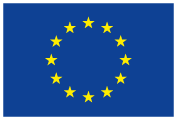Session VI
The Curatorial: Navigating Knowledge Boundaries
Chairs: Frank Moulaert, Hilde Heynen & Michael Kaethler (KU Leuven)
Despite the surge of interest in knowledge production in art and design, there remains insubstantial consideration as to the curatorial’s role in the production of knowledge (O’Neill 2008)—particularly how it navigates the boundaries that exist between different knowledge communities, such as cultural producers and audiences. Maria Lind (2010) provides a particularly active description of the curatorial, as “a way of thinking in terms of interconnections: linking objects, images, processes, people, locations, histories, and discourses in physical space like an active catalyst generating twists, turns, and tensions.” This highlights the curatorial qualities of ‘being in-between’ as a mediator of actants purposefully involved in the shaping and forming of knowledge through forging connections, translating messages and staging exchanges of signification.
Knowledge boundaries arise, according to Carlile (2002), from syntactic (language), semantic (interpretation of meaning) or pragmatic (values) differences. To transcend these boundaries demands forms of translation, mediation or transformation. This can be found across curatorial practices, for example, establishing a meaningful interaction between the cultural artefact that arose from one knowledge community and the knowledge communities of an audience. Mediating knowledge communities involves negotiating considerable epistemic differences, facilitating conduits for understanding and encouraging the emergence of new knowledge.
Operating across a discursive constellation with an array of constituent parts and sticky—hard-to-articulate-knowledge–how does the curatorial navigate knowledge boundaries? What relevant approaches, methods, or techniques can be drawn out of curatorial practices? As contemporary art and design seek new relationships to their publics, what does this entail for the curator-as-mediator?
We are interested in hosting discussions on the mediatory nature of the curatorial and the theories, approaches, tools, and methods that facilitate the negotiation and navigation of knowledge boundaries in art and/or design within a context of participation, social engagement or public space production.
Topics related to the following are of particular interest:
– How knowledge boundaries are navigated by the curatorial
– Understanding curating through its knowledge dimensions
– The social nature of the curatorial, the social construction of curatorial roles
– Unpacking the tacit dimensions of curatorial decision making
– Accountability and curatorial knowledge production
– Introducing different knowledge practices/ approaches to the curatorial
– To what extent can curatorial approaches to navigating knowledge boundaries be applied to other domains?


